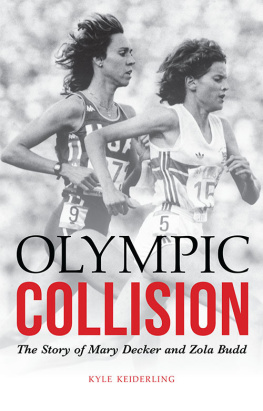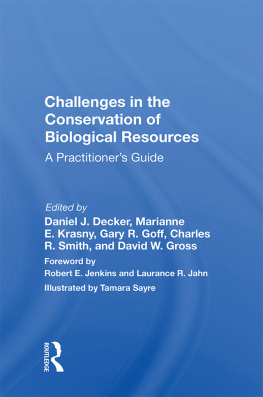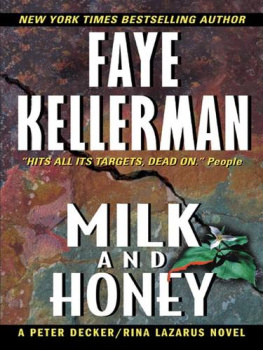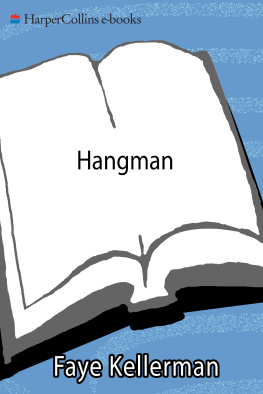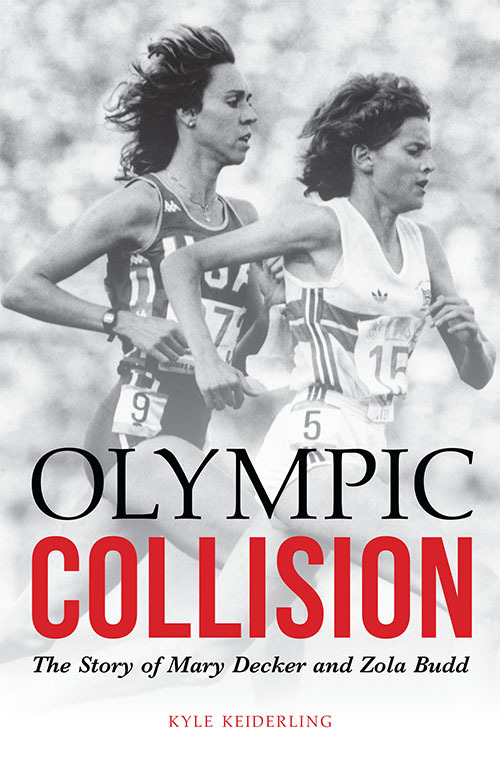A fascinating look behind the scenes at one of sports most shocking incidents. A tale of greed, human nature, and how it affected two amazingly talented runners.
Marty Liquori, ABC analyst for the 1984 Olympics and former number one in the world in the mile and 5,000-meter races
Kyle Keiderling has a style of writing that will leave you captivated. His book provides incredible depth beyond one historical Olympic moment.
An immensely readable and elegantly written account of the lives and careers of two iconic women distance runners who will always be remembered for their dramatic collision at the Los Angeles Olympics. The penetrating insights it provides into the murky world of politics, illegal drug use, and money in track and field in the 1980s will be of interest well beyond just the running community.
Olympic Collision
The Story of Mary Decker and Zola Budd
Kyle Keiderling
University of Nebraska Press Lincoln & London
2016 by Kyle Keiderling
Cover designed by University of Nebraska Press; cover image Bettmann/Corbis / AP Images.
Author photo Robert John Kley
All rights reserved
Library of Congress Cataloging-in-Publication Data
Names: Keiderling, Kyle, author.
Title: Olympic collision: the story of Mary Decker and Zola Budd / Kyle Keiderling.
Description: Lincoln: University of Nebraska Press, 2016. | Includes bibliographical references and index.
Identifiers: LCCN 2016012186 (print)
LCCN 2016033151 (ebook)
ISBN 9780803290846 (hardback: alk. paper)
ISBN 9780803296503 (epub)
ISBN 9780803296510 (mobi)
ISBN 9780803296527 (pdf)
Subjects: LCSH : Decker, Mary, 1958 | Runners (Sports)United StatesBiography. | Budd, Zola, 1966 | Runners (Sports)South AfricaBiography. | Runners (Sports)Great BritainBiography. | Olympic Games (23rd: 1984: Los Angeles, Calif.) | BISAC : SPORTS & RECREATION / Olympics. | SPORTS & RECREATION / Running & Jogging. | BIOGRAPHY & AUTOBIOGRAPHY / Sports.
Classification: LCC GV 1061.15. D 42 K 45 2016 (print) | LCC GV 1061.15. D 42 (ebook) | DDC 796.420922 [B]dc23
LC record available at https://lccn.loc.gov/2016012186
The publisher does not have any control over and does not assume any responsibility for author or third-party websites or their content.
Dedicated to the memory of
William F. Faherty Jr., mentor and friend,
and
Erik Polhemus, husband, father, and my favorite nephew, who left us far too early.
And, as always, for Ky.
This isnt a tale of heroic feats.... Its about two lives running parallel for a while, with common aspirations and convergent dreams.
Ernesto Che Guevara de la Serna, The Motorcycle Diaries (2005)
Contents
Many people assisted me in the research involved in this book. I am indebted to them for their cooperation and kind assistance in sharing their thoughts and memories with me.
First and foremost I must thank Zola Budd Pieterse, for her help in understanding the events described herein and her willingness to share her insights into what was, for her, a difficult experience many years ago. She also shared her scrapbooks and photos and made available to me the names and addresses of others that I could interview. She graciously permitted me to visit with her at her home in South Carolina on four occasions and replied promptly to all telephone and email correspondence with unfailing good humor. A former world champion, she remains a national heroine in South Africa and will forever be a champion in my mind for her willingness to relive for me some of the most difficult times any athlete ever faced anywhere.
The need to speak with as many participants as possible led me to many places around the globe. In Romania, I was assisted by Simion Alb, Director of Tourism for Romania, who conducted the interview for me with Maricica Puic at her home.
In Germany, David Hein conducted interviews with Brigitte Kraus.
The other runners in the 3,000-meter event at the 1984 Olympic Games were all, with one exception, willing to speak with me at length about their views on the incident as well as their own performance in the race. This group of accomplished athletes, who were largely overlooked by the media at the games, were all cooperative and willing to share their understanding of the event as they saw it as well as the state of the sport in the 1980s. The sole exception was Mary Decker Slaney, who refused to acknowledge numerous requests by mail and email for an interview.
I did have the cooperation of most of those who coached Mary through the years, and I am very grateful to them for their willingness to speak about her and her accomplishments as well as her character. They were an invaluable source of information. Don DeNoon and Dick Brown were especially helpful, as was Rich Castro.
Pieter Labuschagne was willing to participate through an exchange of emails with regard to Zola Budds career while he was coaching her during the time leading up to and shortly after the Olympics. In Great Britain, John Bryant, a world-class runner, spoke with me at length about Zolas career in that country while he was involved with coaching her and about the many obstacles Zola faced while in Great Britain. Rebecca Biddiss provided research assistance, searching newspaper archives in London for relevant articles on Budds career. Richard Mayer was of great assistance to me in South Africa, suggesting sources, confirming information, and reviewing the manuscript for accuracy.
Alexander Keating, my attorney and friend, assisted with research on Decker in New Jersey.
Many of the best writers in the United States and Great Britain spoke with me about their coverage of both Mary and Zola and were unfailingly willing to help me.
Richard Pound of the International Olympic Committee ( IOC ) was a great source of insight into that always secretive organization as well as furnishing insights about the former IOC president, Juan Antonio Samaranch.
In addition to the writers I spoke with, I am thankful that Marty Liquoria former runner of international repute and the on-air television commentator for the race in 1984was willing to describe the events as he saw them at the time and honest enough to admit he had erred in his instant analysis under the pressure of a live event.
As my tutor in middle-distance running I was fortunate to have Jodie Bilotta DArianoa former Stanford star and the holder of twenty-five high school state championships in track and cross-country in New Jerseyas my teacher. In addition, Stacy Bilotta Gaynor, a former high school All-American and North Carolina State University star, proved invaluable as a fact checker.
The many reference librarians that indulged my pathetic attempts at retrieving microfilm articles without ejecting me from their presence include those at the Los Angeles Public Library and the staff at the Lamoreaux Justice Complex in Orange, California.
Many thanks to John Frangelli and Ed McManimon, my first readers, for their comments and suggestions. For their hospitality while researching and writing the book, I am indebted to Linda and Robert Aloia and Helen and John Frangelli.

